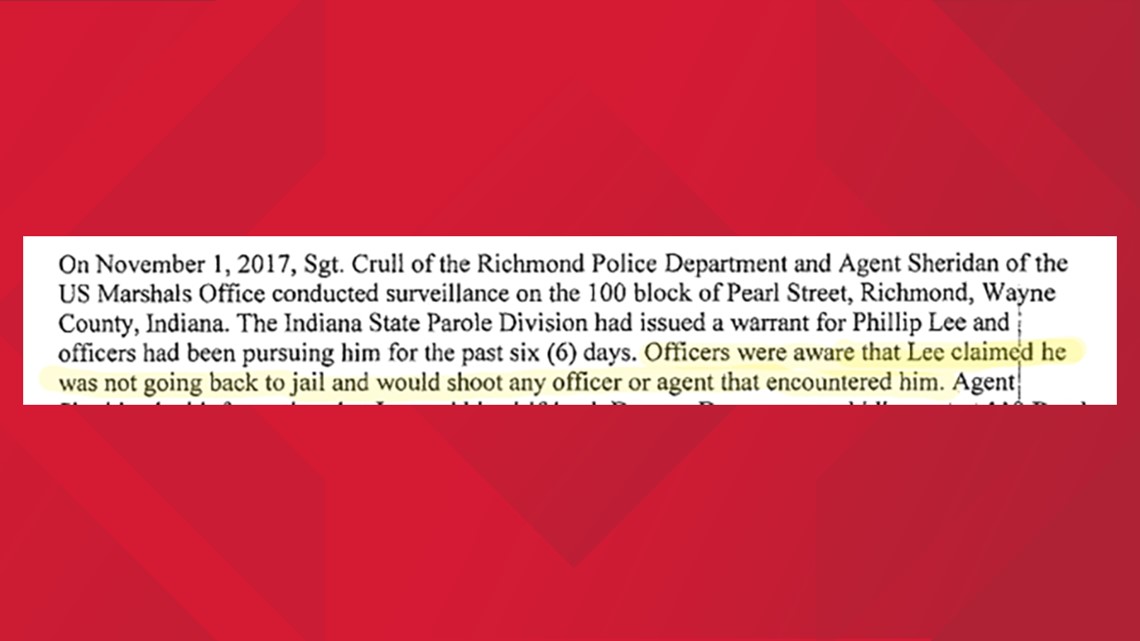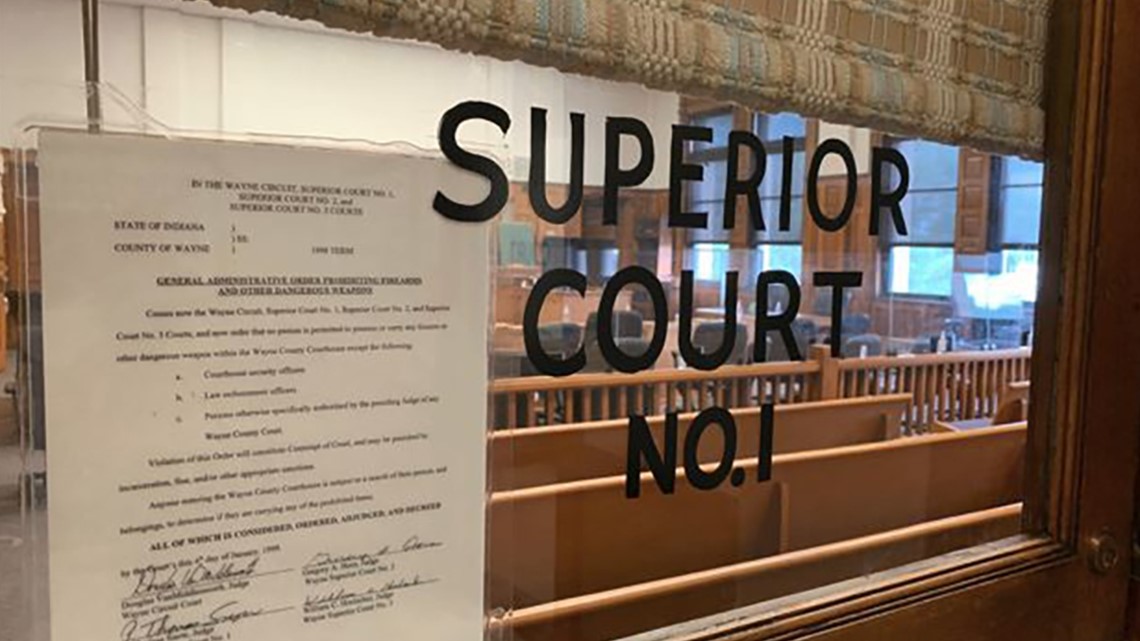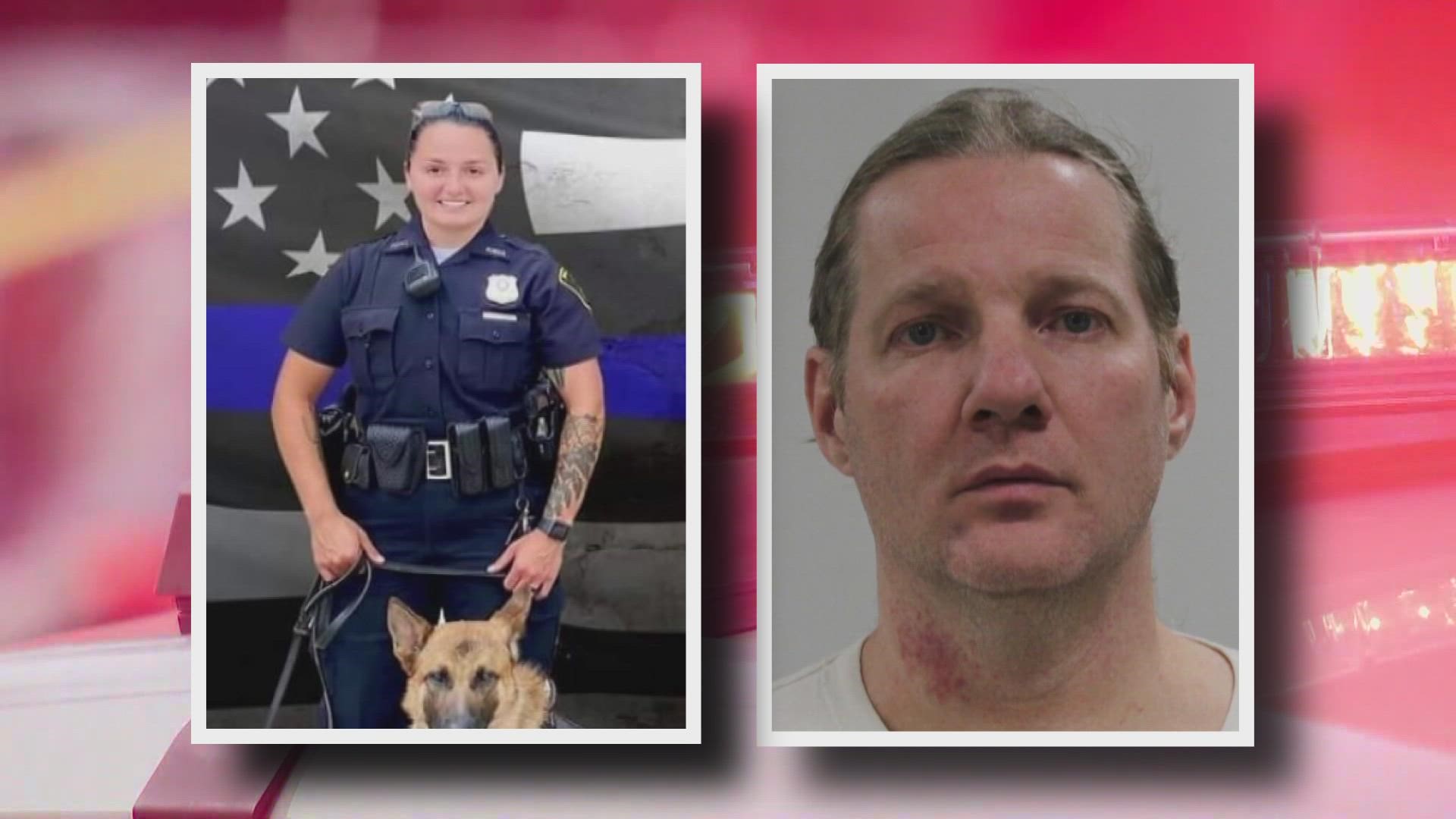RICHMOND, Ind. — When a prosecutor charged Philip Lee last month with the attempted murder of Richmond Police Ofc. Seara Burton, it was just the latest in a long list of felonies that have kept a habitual criminal behind bars for 22 of the past 28 years.
Lee’s previous charges include possession of marijuana and cocaine, burglary, battery, escape, auto theft and perjury – just to name a few. During his previous encounters with law enforcement, police reports show Lee repeatedly attempted to flee from officers and, in some cases, bite them and try to steal their service weapons.
In November 2017, when Lee plead guilty to resisting law enforcement, a probable cause affidavit filed by a Richmond Police officer stated, “Officers were aware that Lee claimed he was not going back to jail and would shoot any officer or agent that encountered him.”
So a plea deal offered to Lee in 2018 – a deal that allowed him to serve less than four years in state prison instead of a possible ten years behind bars – raised questions, especially after the convicted felon shot and critically injured a police officer just a few months after his release.
13 Investigates has now learned why Lee got that plea deal: investigators failed to collect critical evidence at the crime scene.


A serious charge dismissed
A 2017 arrest could have sent Phillip Lee to prison for a decade, but he ended up with a plea deal for a much lighter sentence.
Court documents show Lee was arrested in 2017 at his girlfriend’s North 20th Street home in Richmond when he tested positive for methamphetamine, cocaine and THC during an unannounced parole check.
At the time, an officer identified in court documents as a Wayne County Sheriff's deputy also noted law enforcement found a loaded rifle propped up against a wall between the living room and kitchen, according to a probable cause affidavit. (13News has since discovered an error in the court paperwork. The officer worked for the Richmond Police Department, not the sheriff's department.)
Wayne County Prosecutor Michael Shipman charged Lee with multiple felonies including possession of narcotics and possession of a syringe, as well as possession of a firearm by a serious violent felon. But the firearm charge – the most serious one Lee faced – was dropped as part of a plea deal despite Lee’s violent history and threats against police.
RELATED: 'Surrounded by her family' | Richmond PD chief says Ofc. Seara Burton being moved to hospice
The prosecutor agreed to dismiss the firearm charge in exchange for a guilty plea to the drug charges. As a habitual criminal with at least three previous felony convictions, Lee received a four-year sentence instead of a possible ten.
He served that sentence at several Indiana state prisons before earning his release this January.
Seven months later, Lee is accused of following through on the threat he made in 2017. When Ofc. Burton approached him in early August during a stop for suspected drug activity, the convicted felon allegedly shot Burton in the head. Had Lee been convicted of the firearm charge, he likely would have been in prison at least until 2023 based on the state’s recommended sentencing guidelines.
Why he got a plea deal
To better understand why a habitual violent offender with a history of violence and threats against law enforcement was offered a plea agreement, 13 Investigates requested an audio recording of Lee’s 2018 sentencing hearing in Wayne County Superior Court.
The recording reveals the prosecutor did not believe he had the evidence needed to pursue the serious firearm charge against Lee. During the hearing, Shipman told Superior Court Judge Charles Todd:
“There’s no forensic analysis done to confirm that Mr. Lee’s fingerprints were on there, any kind of DNA evidence. It’s just one of those ‘it was in the home type of things,’ therefore he was arrested for it. And his co-defendant, Ms. White, has taken responsibility for several of the items inside the home, and so we felt there was an evidentiary dispute about who actually possessed that firearm since it wasn’t specifically linked to Mr. Lee, although it was found inside the home. And we recognized that should it proceed to trial, that’s going to be an evidentiary issue for a jury to consider, and there may be a reasonable doubt raised as to that particular issue. And so we agreed to kind of come to a middle ground here where he would plead to the drug offenses that he did commit and the other offenses would be dismissed for that specific reason.”
Todd accepted the plea agreement after finding the deal to be “reasonable.”


But the sentencing hearing raises another important question: Why didn’t the prosecutor have the necessary forensic evidence to proceed with the charge?
Shipman responded to that question this week, and his answer casts doubts on how law enforcement and parole officers conducted their investigation.
No one collected the evidence
This week, in response to questions from 13 Investigates, Shipman explained the reason he did not test the rifle to see if Lee’s fingerprints were on the weapon.
“The rifle which supported the charge was not collected by police and placed into evidence storage at RPD [Richmond Police Department],” he told 13News. “We learned this after Mr. Lee was arrested. We could not prove the Serious Violent Felon count because the rifle was not available to present to a jury. It was important to collect the rifle as evidence so that it could be tested for fingerprints, DNA, etc. Since it was not available, no testing could be done to prove who possessed the rifle.”
He also said after the charge was filed, Lee’s girlfriend claimed the rifle belonged to her and that multiple people in and out of the home also had access to the rifle, making it “not possible to circumstantially prove that Mr. Lee exclusively possessed the rifle.”
His conclusion: “Due to this lack of evidence and other factors described above, I could not prove the SVF charge beyond a reasonable doubt. I was legally and ethically obligated to dismiss the charge.”
A Richmond Police evidence sheet shows the law enforcement official who accompanied parole officers to Lee’s parole visit collected three pieces of drug-related evidence (plastic bags containing plant matter, a vial containing red liquid and a glass pipe that contained residue) -- but not the rifle located at the scene.
Veteran law enforcement officials contacted by 13News question the decision to not take the firearm into custody.
“I’m confused as to why it was not seized. That is very curious to me,” said Lawrence Hunter, a police consultant and retired police captain who served 24 years with the Waterbury (Conn.) Police Department. “When there is a firearm in a home where a felon is known to be living -- not just visiting but living -- generally it is standard operating procedure to take possession of the firearm to perform tests on it to see if others crimes have been committed with it and to see if the felon has come in contact with the firearm.”
Hunter said not seizing a firearm, especially when it’s not clear who the weapon belongs to, is likely an oversight.
“It could be a mistake – a very costly one as we see the results that have come back to harm law enforcement directly,” he said.
'Shocking failure'
13News also spoke with a longtime prosecutor in another Indiana county who said he had never heard of a case in which a weapon was not seized by police when it was found in a home where a serious violent felon was living.
“That just doesn’t happen, and if it happened in my county and came through my office, I’d flip out and get a search warrant to go back and get that weapon,” said the prosecutor, who asked not to be identified due to the sensitivity of the case. “That’s shocking to me because that gun should have been collected. The system failed and it’s a shocking failure.”
The prosecutor also questioned Shipman’s claim that it was not possible for him to prove that Mr. Lee “exclusively possessed the rifle.”
He said proving exclusive possession is not required to successfully prosecute a convicted felon under Indiana’s law for possession of a firearm by a serious violent felon. Instead, a prosecutor would need only to prove the felon had “actual” or “constructive” possession of the weapon.
Actual possession means the individual was holding the firearm or had it on their person. Constructive possession means an individual had knowledge that a weapon was in their residence and had access to it.
“I don’t buy the argument that the case couldn’t be prosecuted,” said the prosecutor who spoke to 13News on the condition of anonymity. “Even if the firearm belonged to someone else, if he lived there and the gun was leaning against a wall in a common area, he flat-out possessed that gun. It’s not a hard case to win.”
13News contacted the Wayne County Sheriff’s Department to ask why the person identified as a sheriff’s deputy in the probable cause affidavit did not collect the rifle seen at the home where Lee was living.
Sheriff Randy Retter told 13News he had no record of that individual ever working for the Wayne County Sheriff’s Office.
“I’m not sure how he was mistaken as a deputy, and believe he was an officer with the Richmond Police Department during incident you are inquiring about,” he wrote.
13 Investigates contacted the officer listed in the court document, and he confirmed he was actually employed by the Richmond Police Department at the time of the investigation. He is now a member of the department's detective bureau.
13 Investigates has asked both the Richmond Police Department and the officer why he did not seize the rifle found in the home where Lee was living in 2017.
Richmond Police Chief Michael Britt responded Friday afternoon.
“The facts of this case are under review at this time. I may be in a better position to make an informed response next week,” he wrote. “My staff have been directed, by me, not to make any statements on this matter and all responses would come from me.”
13News also contacted the Indiana Department of Correction (which oversees the state’s parole program) to ask why parole officers did not collect the rifle. The department told 13News it is the responsibility of police -- not parole officers -- to collect evidence.
“Parole agents are not law enforcement officers so when they believe a crime has been committed, they contact local law enforcement to investigate and collect evidence needed to pursue prosecution. That was done in this case, and a parole violation was issued for violations found during that visit,” said IDOC chief communications officer Annie Goeller.
As of September 12, Lee is out of the hospital and is in custody in an Ohio jail awaiting extradition to Indiana to face two counts of attempted murder. According to Richmond Police, Burton is in a Richmond-area hospice facility after her family decided to remove her from life support.
Editor's Note: This story has been updated to reflect an error in the probable cause affidavit filed by the Wayne County Prosecutor's Office in 2017. That court document incorrectly identified the law enforcement officer – at the home where Lee was arrested – as a sheriff's deputy. He in fact worked for the Richmond Police Department.

